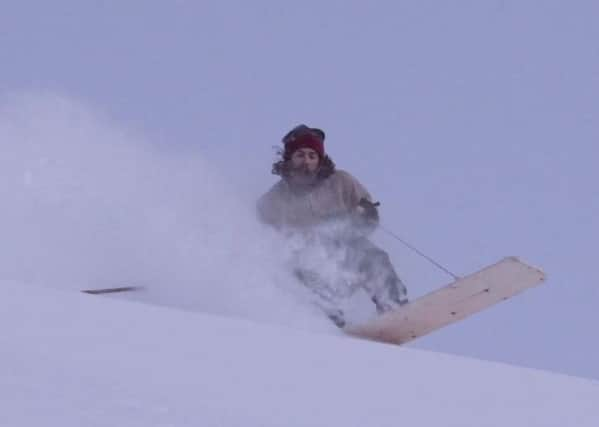Roger Cox: If you thought snowboarding was born in 1960s America, think again
This article contains affiliate links. We may earn a small commission on items purchased through this article, but that does not affect our editorial judgement.


That’s all still true, in the sense that it’s the story of how we arrived at the sport of snowboarding as it’s now practised at countless ski resorts all over the planet, but in the last few years it’s become apparent that the official history – as is so often the case – is more than a little WASP-centric.
An early wake-up call was a segment in a Jeremy Jones snowboard movie, recorded in 2008 and released in 2009, in which Jones travelled to a remote village in the Kaçkar Mountains in eastern Turkey. There, he met a man called Celime who, it transpired, had started snowboarding in 1946 – a full 20 years before Poppen first dreamed up the Snurfer. But that wasn’t the half of it. It turned out that the simple, binding-less boards Celime and his friends rode for fun had been made and used in the same way in this part of the world for hundreds of years. Far from being a relatively recent off-shoot of skiing, then, snowboarding was in fact an ancient sport with a rich and exotic backstory.
Advertisement
Hide AdAdvertisement
Hide AdThe boards ridden in this region of Turkey – dubbed “Lazboards” by Jones, after the Laz people who live in the area – consist of three long, thin wooden planks held together by lateral wooden batons, with a rope attached to the nose to assist with balance. Riders also drag a long pole behind them in the snow to help with steering. In the film, there are a few shots of Jones riding a Lazboard, and – as you’d expect from one of the word’s greatest sideways-sliders – he looks like he’s been doing it all his life. After only a couple of tantalising shots, though, we cut to a segment in which he’s dropped at the summit of an unidentified Kaçkar peak by helicopter and proceeds to race to the bottom on conventional gear, and I can’t have been alone in feeling a little short-changed.
Anyone who was similarly disappointed by the relative scarcity of Lazboard action in that film, however, should check out Foothills: The Unlinked Heritage of Snowboarding – a new short from Patagonia, in which sponsored riders Alex Yoder and Nick Russell visit the same part of Turkey and have their own Lazboard adventure.
In a village called Meseköy (formerly Petran) the duo hook up with Hizir Havuz, a builder of traditional snowboards who is doing his best to keep the tradition alive and pass it on to the next generation (rather tragically, the youngsters don’t seem all that bovvered.)
True, Yoder and Russell do a fair bit of riding on conventional gear (there’s one sequence, in which they ride over the top of a series of huts, hopping from one snow-covered roof to another, that’s out of this world), but they also spend a decent amount of time riding Havus’s traditional boards, with mind-blowing results.
In the extended sequence that closes the film, the pair make long, graceful turns through deep powder that are a reminiscent of the lines drawn by early big wave surfers. The duo also show how maneouvreable the boards can be. By pulling on the rope at the front, they are able to lift most of their boards out of the snow, and at high speed this means they can make even sharper turns than on a conventional snowboard as they have less surface area in contact with the snow.
Watching Yoder and Russell you can’t help thinking: what if this is more than just some anachronistic curiosity? What if this could really be a better way to enjoy deep powder than a conventional snowboard? Several snowboard companies are thinking along similar lines, not least Burton, whose 2017 snowboard line-up includes the no-bindings “Throwback”. The wheel has come full circle, and we are here.